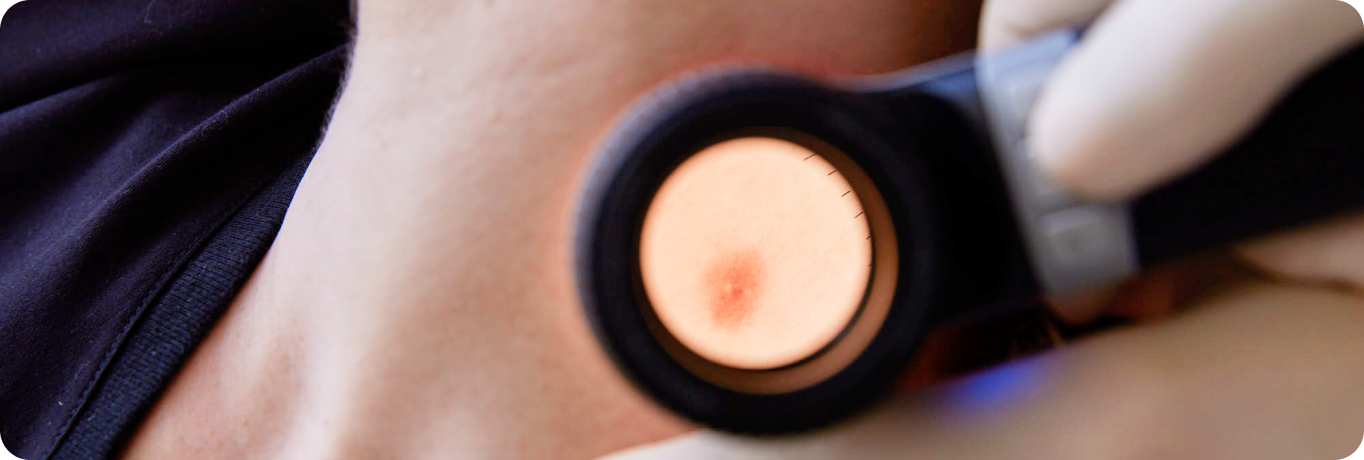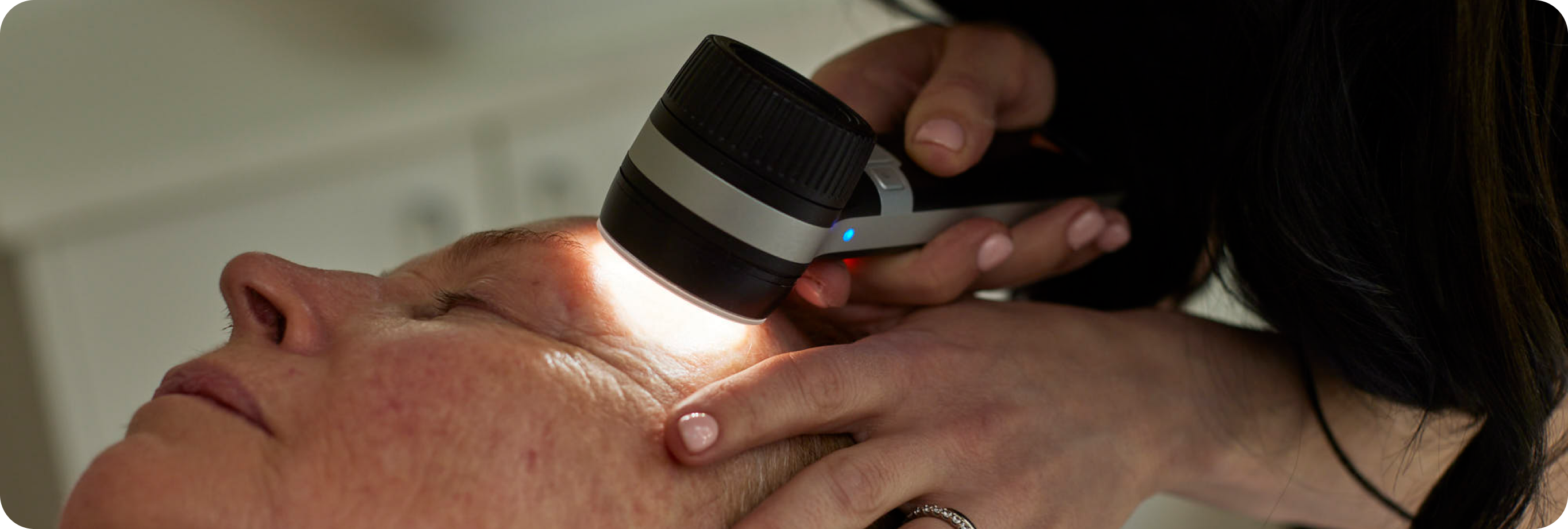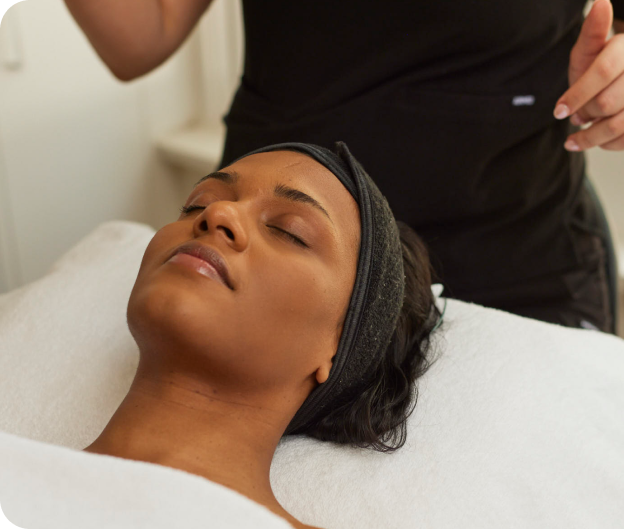MEDICAL
Skin Checks
We take skin cancer extremely seriously. Should you feel you might be at any risk for a current skin cancer, we prioritise you for same, or next day appointments with our Dermatologists, Skin Cancer GPS or Skin Cancer Nurse practitioners. As you would expect with Australia having the highest rates of skin cancer in the world, dermatologists like those at Skindepth Dermatology play a massive role in the Dermatology and Skin Cancer Medicine arena, with regard to the early detection, treatment and surveillance of skin cancers.

Skin cancers come in three main varieties: Basal Cell carcinoma (BCC), squamous cell carcinoma (SCC) and malignant melanoma. Malignant melanoma results from intense sun exposure and more recently have been linked to 10 or more visits to the sun bed. Melanomas if not detected early can invade the blood stream, and appear in other areas of the body (metastases). Not all melanomas arise in sun-damaged areas.
Most Australians who have experienced an Aussie upbringing with days on the beach, and sun exposure, will need a skin check at some stage. Some risk factors for skin cancer are:
- Family history of melanoma
- Extensive sun exposure
- Blistering sunburn
- Solarium and sun bed use
- Underlying medical conditions
- Certain immunosuppressive medications
Mole checks involve a thorough assessment of the entire skin for moles or suspicious lesions. Many skin cancers have no symptoms and may not be noticed by a patient, so routine checking is important. A mole check involves undressing and laying down so that a dermatologist may use a dermatoscope to examine all moles, spots and lesions. Sometimes photographs may be taken for surveillance of a lesion, and at times a biopsy may be required to further delineate the nature of a suspicious lesion.
Frequency of skin check depends on risk factors. Usually if you have had a melanoma, skin checks will be 3-6 monthly for a few years. Non melanoma skin cancers require on average 6 monthly skin checks. Yearly skin checks can be done if a patient who has had a skin cancer in the past hasn’t had any for a while. Your dermatologist will advise how frequently you need to be checked.

-
Do I require a referral for a full skin check?
As you are entitled to a Medicare rebate, we do require a complete GP referral prior to your full skin check appointment.
However if you chose not to obtain a GP referral, you can still make a skin check appointment, but there is no eligible medicare rebate. -
How to identify a concerning lesion?
For at home skin checks, where you don’t have access to a dermatologist, there are two main methods of identifying potential lesions of concern or melanomas.
1. The ABCDE Method:
A: Asymmetry
Most melanomas will be asymmetrical.
B: Border
Melanomas present with irregular borders, including notched and blurry edges.
C: Colour
Multiple different colours within a mole are a suspicious feature. These include shades of brown, black, white and red.
It is important to note, that rarely melanomas will present as amelanotic (lacking colour).
D: Diameter
Larger lesions are more suspicious, especially if the lesion is greater than 6mm.
E: Evolving
Any change in size, shape, colour, or any new symptom within the mole (bleeding, itching, or crusting) may be a warning sign of melanoma.
2. The Ugly Duckling Method:
Generally, moles on the body all appear very similar in nature, including size and colour. If any mole stands out and appears different to the surrounding moles, it may be considered suspicious.
-
How often should I be receiving a full skin check?
Generally, if you are a Caucasian person living in Australia you are immediately at risk of developing skin cancers and the associated symptoms of sun damage. If you do not have any other risk factors or lesions of concern, we advise a full skin check every few years once you are over a certain age. Full skin checks are generally not required in the younger population (e.g., 20-30 years), unless indicated by your medical practitioner.
If you possess any of the risk factors for skin cancer, we advise you remain up to date with annual skin checks.
If you have previously had a non-melanoma skin cancer (NMSC) or a melanoma, we would advise more frequent full skin checks ranging from 3-6 monthly.
-
What happens if a suspicious lesion is identified?
If your dermatologist/nurse practitioner identifies a lesion of concern during your full skin check, our team will perform a diagnostic skin biopsy during the same consult. A biopsy involves your doctor removing a small portion of the lesion (approx. 2mm) to then send to a pathology service for analysis. A biopsy is performed under local anaesthetic and there is very minimal downtime involved (1-2 days or as advised).
Once the result is received by the pathologist, it will take approximately 7 days for your dermatologist to obtain the report. Following the diagnosis, we will then contact you with the results and arrange a treatment plan accordingly.
-
Who can conduct a skin check?
Our dermatologists are skin specialists and therefore any one of them can conduct a full skin check. However, patients who want peace of mind skin checks are performed with our specialised skin cancer GP, Dr Elissa Heinke and our nurse practitioner Sharon Hudson.
Sharon Hudson has joined the Skindepth team and is a clinical nurse consultant who specialises in dermatology and skin cancer. More recently, Sharon has gained qualifications in dermoscopy and skin cancer medicine which has led her down her current pathway of becoming Australia’s’ first Nurse Practitioner in Skin Cancer and Melanoma.
The spot check clinic is available to all patients at a reduced rate without the waitlist associated with seeing a dermatologist. During this clinic, if a lesion of concern is identified, a medical doctor is on hand to perform any biopsies that are indicated.
-
What are the risk factors for skin cancers?
There are many risk factors for the development of non-melanoma skin cancers or melanoma. These include:
· Increased age.
· A history of sun exposure and sun burns.
· History of solarium use.
· Multiple moles.
· Previous history of skin cancers, including melanoma.
· Family history of skin cancers, including melanoma.
· Fair skin, that burns easily. This skin type is more common in red-haired or blonde individuals.
· Medication history
-
How do I prevent skin cancer?
There are many lifestyle habits that you can implement to protect yourself from skin cancer. These include:
· Avoid sun burns – wear SPF 50+ and seek shade.
· Avoid tanning, including solariums. Fake tanning is okay!
· Cover up with clothing and hats during summer.
· Conduct at home skin checks and monitoring.
· Keep up to date with your regular in-clinic skin checks.
Medical:
General Dermatology Skin Checks Surgical Dermatology Vulvar Clinic Wart Clinic Medical Treatments- Choosing a selection results in a full page refresh.
- Opens in a new window.
